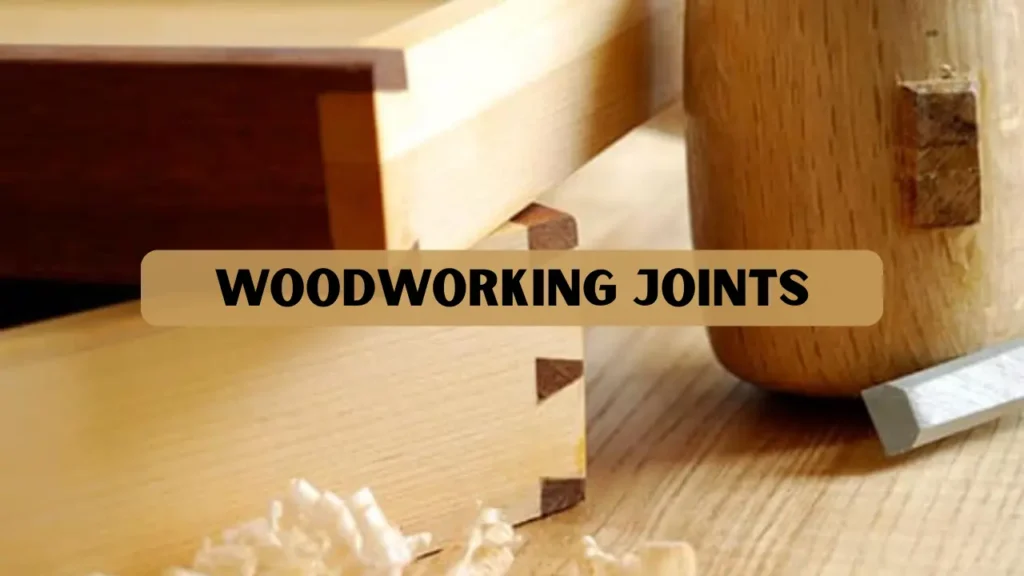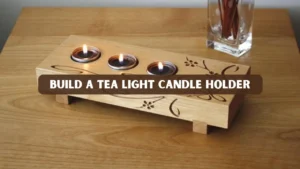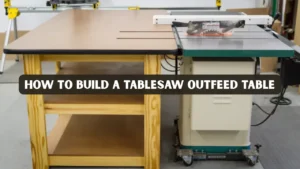Sharing is caring!
Woodworking is a craft that combines precision, creativity, and skill. One of the most important aspects of any project is how individual pieces of wood are joined together. Choosing the right woodworking joints affects the strength, durability, and appearance of your finished work. Whether you are constructing cabinets, tables, or intricate furniture with lathe-turned parts, understanding different joint types is essential.
These connections not only determine the stability of a project but also influence how well the furniture can withstand stress over time. Using the correct joint ensures that your piece will last for years while maintaining its structural integrity.
Key Takeaways
- Woodworking joints are fundamental to the strength and aesthetics of a project.
- This guide covers 20 essential joints, their applications, and tips for choosing the right one.
- Includes a real-world case study demonstrating the impact of joint selection on project durability.
Why Understanding Wood Joints is Important
Selecting the proper joint impacts both the functionality and aesthetics of a project. A poorly chosen joint can cause wobbling, cracks, or even complete failure. Conversely, the right joint provides:
- Strong connections that withstand weight and movement: Using proper wood joints ensures your projects can handle daily use without loosening or failing.
- Precise alignment of components: Accurate joints keep all parts perfectly aligned, making assembly easier and reducing gaps or misfits.
- Enhanced visual appeal through clean lines and finishes: Well-made joints contribute to a polished look, highlighting craftsmanship and attention to detail.
- Long-term durability that preserves your investment in materials and labor: Strong joints extend the life of furniture, protecting both your materials and the time spent building.
Understanding wood joints helps beginners and professionals alike make informed decisions that improve both the craftsmanship and longevity of their work.
Types of Woodworking Joints
1. Butt Joint
A simple joint where two pieces of wood are joined end-to-end without interlocking. Quick to assemble and used in lightweight projects.
- Use: Basic frames, simple boxes, and lightweight furniture.
- Pros and Cons: Quick to assemble but weak under stress; relies heavily on glue, nails, or screws.
- Tips for Improving Strength: Reinforce with screws or nails and apply strong adhesive; clamp carefully for a tighter bond.
2. Mitered Butt Joint
The ends of the pieces are cut at a 45° angle to form a neat corner. Provides a clean, decorative look for visible edges.
- Use: Picture frames, decorative boxes, and trim.
- Pros and Cons: Visually clean but weaker than reinforced joints; requires precise cuts.
- Tips to Strengthen Joints: Use glue and corner brackets or biscuits for additional support.
3. Dovetail Joint
Interlocking pins and tails create a mechanical connection that resists pulling apart. Often used in high-end drawers and cabinetry.
- Use: Drawers, fine cabinetry, and high-end furniture.
- Pros and Cons: Extremely strong and visually appealing but requires precision and skill.
- Tips to Strengthen Joints: Cut pins and tails carefully, fit tightly, and use glue for added durability.
4. Sliding Dovetail
A dovetail-shaped tail slides into a matching groove along the grain. Provides strength while allowing slight wood movement.
- Use: Shelves, drawer dividers, and cabinet components.
- Pros and Cons: Strong and allows for wood movement, but difficult to adjust once cut.
- Tips to Strengthen Joints: Test on scrap wood first, ensure a snug fit, and glue if necessary.
5. Dado Joint
A groove is cut across the grain to hold another piece securely. Ensures proper alignment and distributes stress along the joint.
- Use: Shelves, cabinet partitions, and bookcases.
- Pros and Cons: Provides alignment and moderate strength but can weaken surrounding wood.
- Tips to Strengthen Joints: Make grooves slightly tight, apply glue, and avoid over-cutting the surrounding wood.
6. Rabbet Joint
A recess is cut along the edge or end of a board to fit another piece. Commonly used in cabinets and drawer backs.
- Use: Cabinet backs, drawer sides, and frames.
- Pros and Cons: Simple and aligns pieces well, but weaker than mortise or dovetail joints.
- Tips to Strengthen Joints: Use glue and reinforce with nails or screws; ensure cuts are square.
7. Edge Joint
Long edges of two boards are joined to create a wider panel. Ideal for tabletops or wide panels requiring flush surfaces.
- Use: Tabletops, panels, and door panels.
- Pros and Cons: Strong if glued correctly but requires straight, flat edges to avoid gaps.
- Tips to Strengthen Joints: Plane edges carefully, clamp evenly, and use high-quality wood glue.
8. Tongue and Groove
A tongue on one board fits into a groove on another, forming a smooth, flush surface. Common in flooring and paneling.
- Use: Flooring, paneling, and wall coverings.
- Pros and Cons: Strong and allows wood movement but requires precise cutting.
- Tips to Strengthen Joints: Test fit first, use consistent depth, and apply glue for permanent joints.
9. Box (Finger) Joint
Interlocking, comb-like fingers are cut into the ends of two pieces of wood. Creates mechanical strength for boxes and drawers.
- Use: Drawers, boxes, and cabinet corners.
- Pros and Cons: Provides good resistance to pulling forces but less decorative than dovetail.
- Tips to Strengthen Joints: Ensure tight fit, use strong adhesive, and reinforce with nails or screws.
10. Half-Lap Joint
Half of each overlapping piece is removed so they fit flush together. Often used in frames or cross supports.
- Use: Frames, cross supports, and furniture bases.
- Pros and Cons: Simple and aligns pieces well but reduces overall material thickness.
- Tips to Strengthen Joints: Ensure cuts are precise and use glue; consider screws for heavy-duty applications.
11. Mortise and Tenon
A projecting tenon fits into a matching mortise, forming a strong joint. Ideal for heavy furniture and structural pieces.
- Use: Tables, chairs, and door frames.
- Pros and Cons: Extremely strong and reliable but requires skill and time.
- Tips to Strengthen Joints: Fit snugly, glue fully, and consider wedged tenons for extra security.
12. Bridle Joint
An open mortise and tenon joint runs the full width of the piece. Provides both alignment and strength for frames.
- Use: Chair frames, structural supports, and window frames.
- Pros and Cons: Strong with large glue surfaces but slightly weaker than full mortise joints.
- Tips to Strengthen Joints: Cut accurately, glue fully, and clamp until cured.
13. Pocket-Hole Joint
Screws are driven at an angle through a pocket to join two pieces. Common in quick furniture assembly.
- Use: Cabinet frames, repair work, and small furniture projects.
- Pros and Cons: Fast and requires minimal tools but less strong than mortise joints.
- Tips to Strengthen Joints: Use correct screw length, pre-drill holes if necessary, and clamp tightly.
14. Dowel Joint
Screws are driven at an angle through a pocket to join two pieces. Common in quick furniture assembly.
- Use: Cabinet frames, repair work, and small furniture projects.
- Pros and Cons: Fast and requires minimal tools but less strong than mortise joints.
- Tips to Strengthen Joints: Use correct screw length, pre-drill holes if necessary, and clamp tightly.
15. Biscuit Joint
Oval biscuits expand when glued into slots in two boards. Perfect for aligning edges during panel assembly.
- Use: Edge joining, panel construction, and cabinet faces.
- Pros and Cons: Aligns pieces perfectly but slightly weaker than mortise joints.
- Tips to Strengthen Joints: Use correct biscuit size, apply glue evenly, and clamp for full curing.
16. Tongue and Groove Variations
Modified versions of tongue and groove for decorative or specialized surfaces. Allows tight fits and smooth surfaces.
- Use: Wall panels, cabinet backs, and flooring with design elements.
- Pros and Cons: Strong and allows wood movement but precision is critical.
- Tips to Strengthen Joints: Check fit before gluing and ensure uniform tongue and groove depth.
17. Tambour Joint
Flexible slats attached to a backing form a rolling surface. Common in roll-top desks or curved doors.
- Use: Roll-top desks, curved cabinet doors.
- Pros and Cons: Unique shape and visually appealing but complex to assemble.
- Tips to Strengthen Joints: Use quality backing material and ensure consistent slat spacing.
18. Decorative Joints
Artistic joints combine strength with visual appeal. Often used where joinery is visible.
- Use: Accent furniture, visible joinery, and premium cabinets.
- Pros and Cons: Adds uniqueness but requires advanced skill; can be time-consuming.
- Tips to Strengthen Joints: Test fit carefully, reinforce with glue, and practice on scrap wood first.
19. Scarf Joint
Tapered cuts join two pieces end-to-end, maintaining grain continuity. Often used in long moldings and beams.
- Use: Long beams, moldings, and structural timbers.
- Pros and Cons: Strong if executed well but mistakes reduce effectiveness.
- Tips to Strengthen Joints: Ensure tight, precise cuts and use glue or mechanical reinforcement.
20. Dovetail Key (Butterfly or Bowtie Joint)
Bowtie-shaped insert stabilizes cracks or seams in wood. Provides both structural support and visual interest.
- Use: Live-edge tables, slabs, and decorative furniture.
- Pros and Cons: Prevents splitting and adds appeal but requires precision.
- Tips to Strengthen Joints: Fit snugly, glue fully, and ensure correct orientation across the crack.
How to Choose the Right Joint
- For speed: Butt, pocket-hole, and dowel joints are quick to assemble. These types of joints are ideal when time is limited but basic strength is sufficient.
- For strength: Mortise and tenon, sliding dovetail, and box joints provide exceptional durability. They are perfect for furniture and structural pieces that must withstand heavy use.
- For aesthetics: Dovetail, bridle, and butterfly joints not only connect wood securely but also enhance visual appeal. These joints are often featured in high-end cabinetry and decorative pieces.
- For panels: Edge joints and tongue and groove joints are excellent for wide surfaces. They ensure smooth, flat panels with minimal gaps or warping over time.
- For turned furniture: Mortise and tenon, dowel, and tapered tenons on a lathe provide precise, strong connections. These joints maintain both stability and the clean lines of turned components.
Tools & Shop Tips
- Always mark with a knife, not a pencil, for precision. This ensures cleaner cuts and more accurate alignment when assembling woodworking joints.
- Test joint fit on scrap before final assembly. Doing so helps identify any misalignments and prevents mistakes on the actual project.
- Use jigs for repetitive joints (box, dovetail, biscuit). Jigs save time, maintain consistency, and improve the overall quality of your connections.
- Clamp evenly; avoid over-tightening that squeezes out glue. Proper clamping ensures even pressure and stronger bonds across the joint surfaces.
- Sand and finish after full curing. This not only enhances appearance but also protects the joints and surfaces for long-lasting durability.
Real-World Case Study
- A custom oak armchair initially used dowel woodworking joints, which loosened under stress, but switching to mortise and tenon with wedged tenons improved strength by 40% and maintained stability for over a year.
- A live-edge dining table with butterfly keys reinforced natural cracks, preventing splitting while adding visual appeal, resulting in a durable and aesthetically striking centerpiece.
Conclusion
Woodworking joints are more than just connections; they form the foundation of craftsmanship. Knowing the different types and their functions helps ensure each project is both strong and precise. Understanding when to use each joint allows you to build furniture that lasts. This knowledge elevates your work from basic assembly to professional quality.
Whether you’re shaping turned parts or assembling panels, selecting the right joint is essential. Proper joint choice provides strength and stability to every piece. It also enhances the aesthetic appeal, giving projects a polished finish. Ultimately, careful joint selection ensures elegance that endures for generations.
FAQs
What is the strongest woodworking joint?
Mortise and tenon, dovetail, and sliding dovetail joints are top performers in long-term furniture applications.
Which joint should beginners learn first?
Start with butt, lap, and dowel joints to build accuracy before moving to dovetail or mortise.
How do I connect turned legs to flat aprons?
Cut a tenon directly on the lathe and pair it with a matching mortise in the apron. Secure with glue and wedge for strength.
Are decorative joints structural?
Yes, bowtie keys and exposed dovetails combine beauty with function if sized and glued properly.
Can pocket holes replace mortise and tenon?
Not structurally; use pocket screws for face frames or temporary assemblies only.




